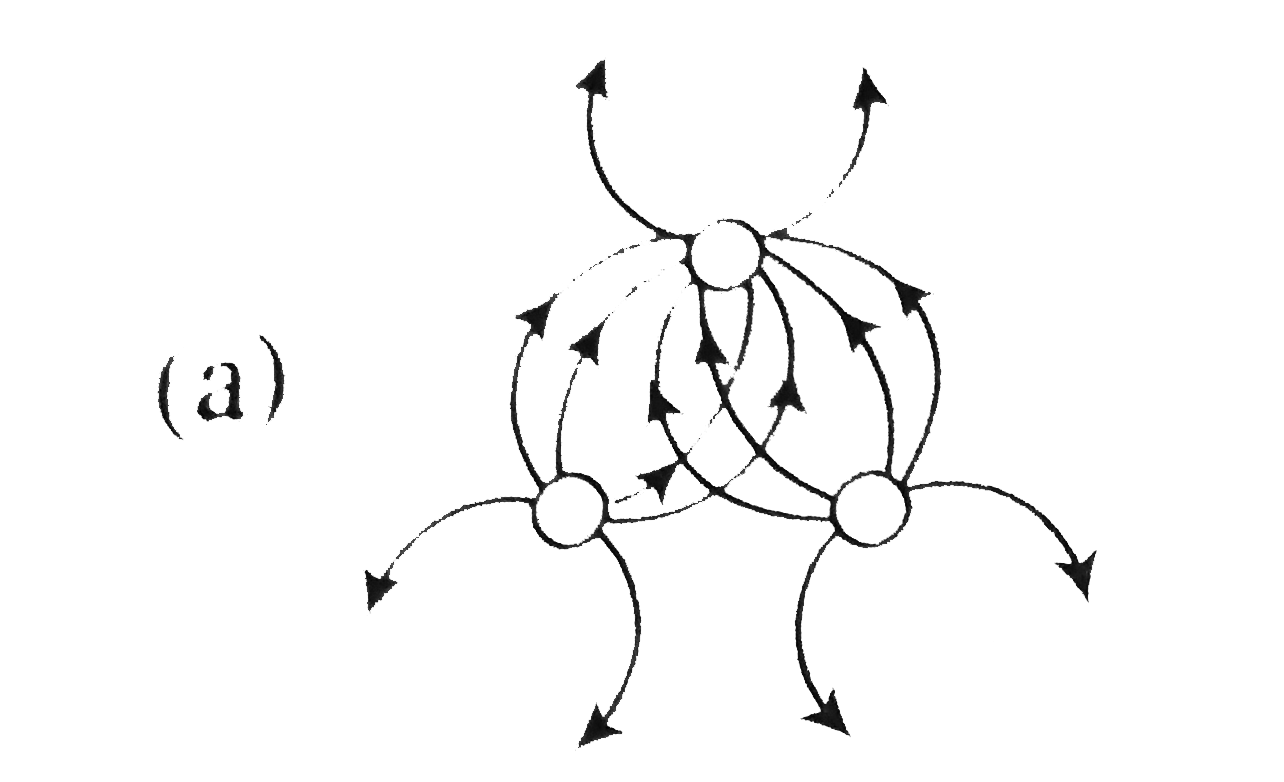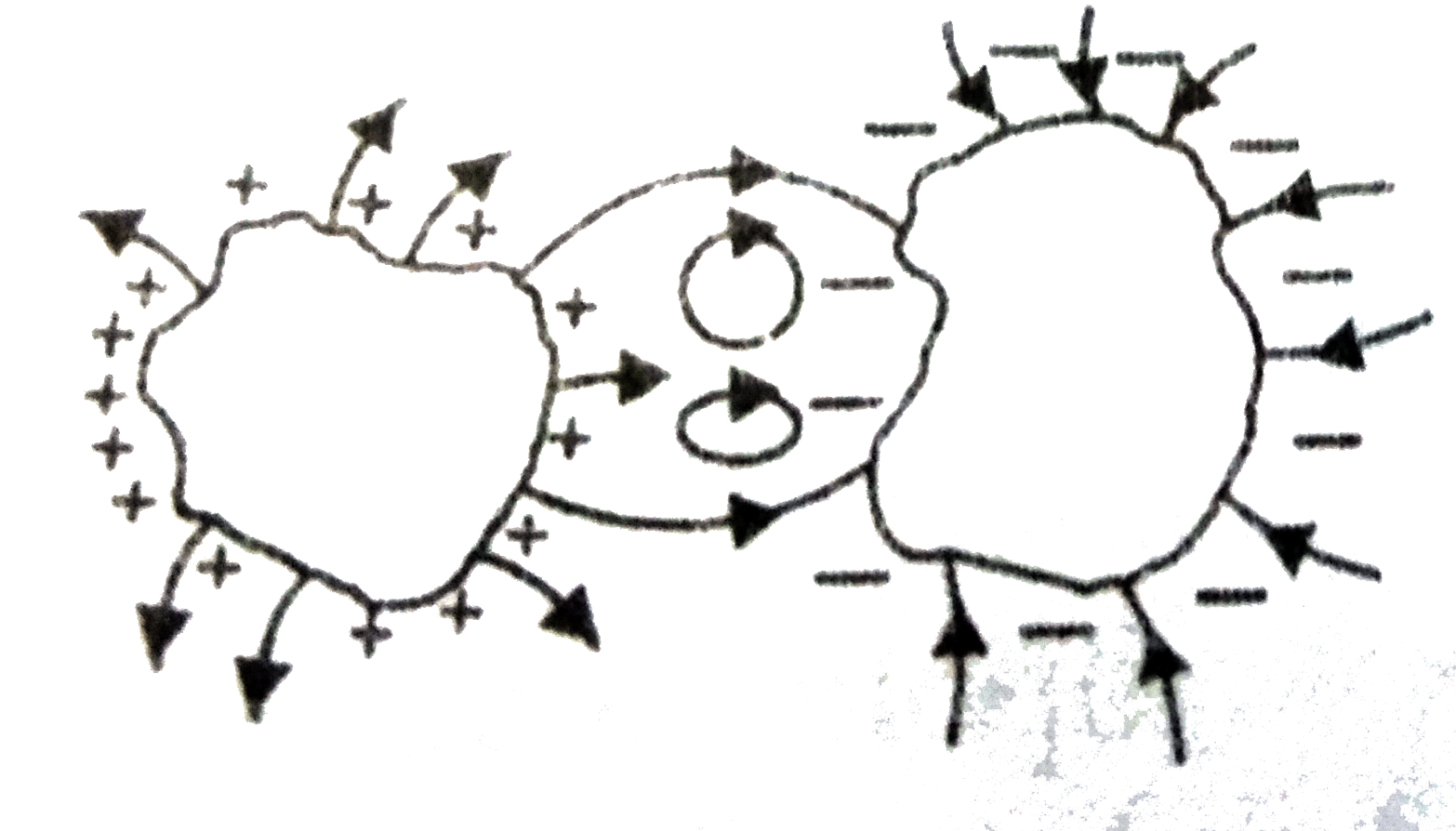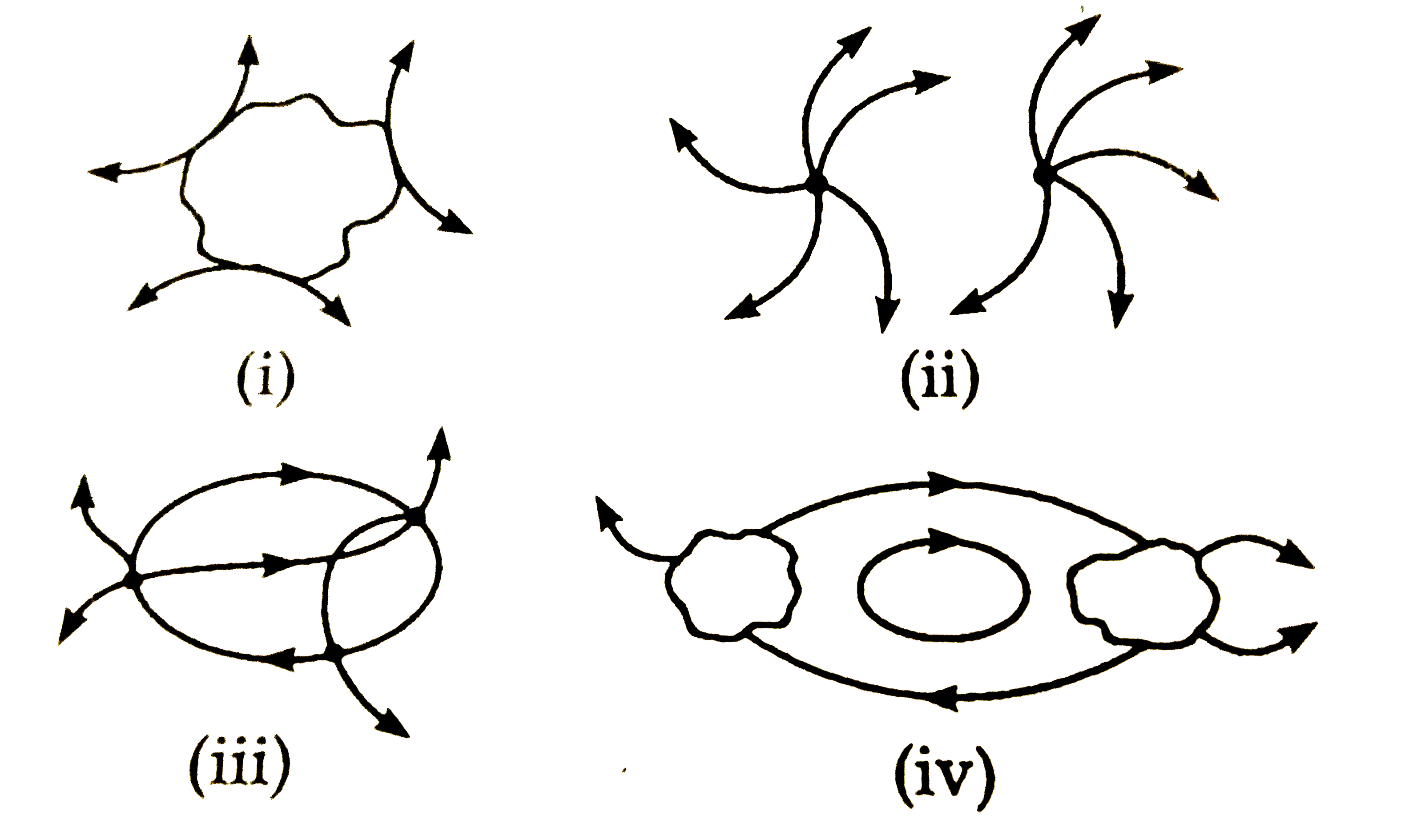Which among the curves shown in Fig. cannot possibly represent electrostatic field lines?

(a) Wrong. Electrostatic field lines are not perpendicular to the surface of conductor.
(b) Wrong. The electrostatic field lines originating from a negative charge.
(c) Right.
(d) Wrong. Electrostatic field lines cannot cross each other.
(e) Wrong .Electrostatic field lines cannot form a closed loop .

Topper's Solved these Questions
- ELECTRIC CHARGES AND FIELDS BOOK - MODERN PUBLICATIONCHAPTER - ELECTRIC CHARGES AND FIELDS EXERCISE - Ncert File (Ncert (Exemplar Problems) )
25 Videos
- ELECTRIC CHARGES AND FIELDS BOOK - MODERN PUBLICATIONCHAPTER - ELECTRIC CHARGES AND FIELDS EXERCISE - Higher Order Thinking Skills & Advanced Level (Questions With Answers)
5 Videos
- ELECTRIC CHARGES AND FIELDS BOOK - MODERN PUBLICATIONCHAPTER - ELECTRIC CHARGES AND FIELDS EXERCISE - Tough & Tricky Problems
20 Videos
- DUAL NATURE OF RADIATION AND MATTER BOOK - MODERN PUBLICATIONCHAPTER - DUAL NATURE OF RADIATION AND MATTER EXERCISE - CHAPTER PRACTICE TEST
15 Videos
- ELECTROMAGNETIC INDUCTIONBOOK - MODERN PUBLICATIONCHAPTER - ELECTROMAGNETIC INDUCTIONEXERCISE - CHAPTER PRACTICE TEST FOR BOARD EXAMINATION
14 Videos
Similar Questions
Knowledge Check
Which of the following curves shown below cannot possibly represent electrostatic field lines?
A B
B C
C D
D
Which of the following represent electric field lines?
A B
B C
C D
D
Which of the following curves represent electrostatic field lines correctly?
A B
B C
C D
D
An electron is either released from rest or projected with some initial velocity in a uniform electric field. Neglect any other force on the electron apart from electrostatic force. Which of the graphs shown in fig could possibly represent the change in kinetic energy of the electron during its course of motion? Explain the situation in each case.


View SolutionWhich of the velocity-time (v - 1) graphs shown in figure can possibly represent one-dimensional motion of a particle? (A) (B)
View SolutionOne of the following is not a property of field lines
View SolutionConsider the four field patterns shown. Assuming there are no charge in the regions shown, which of the patterns represent a possible electrostatic field?
View SolutionA field line is shows in Fig. This field cannot represent

View Solution


